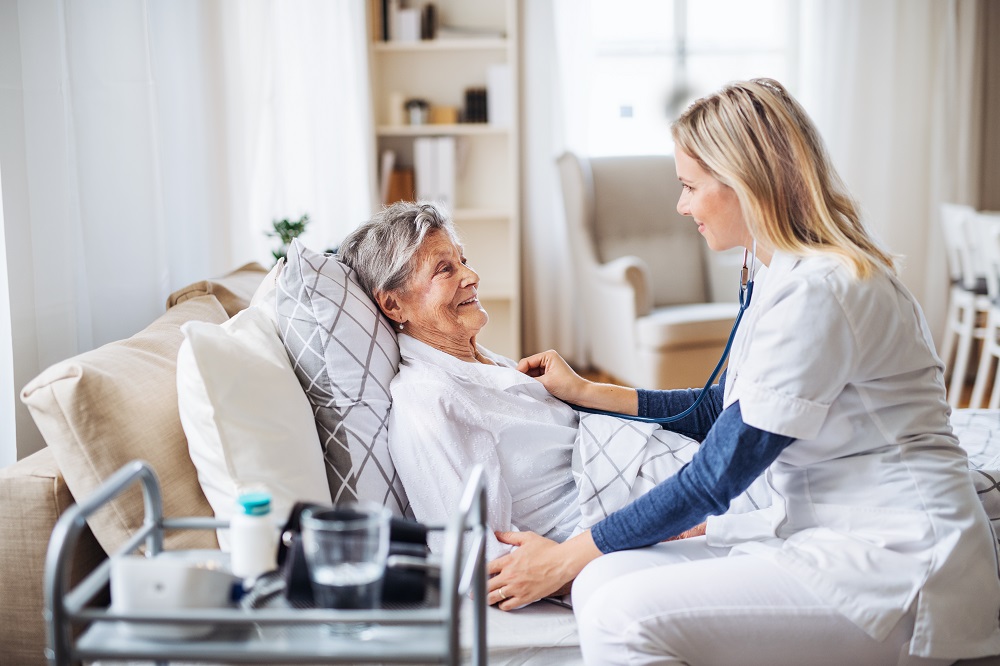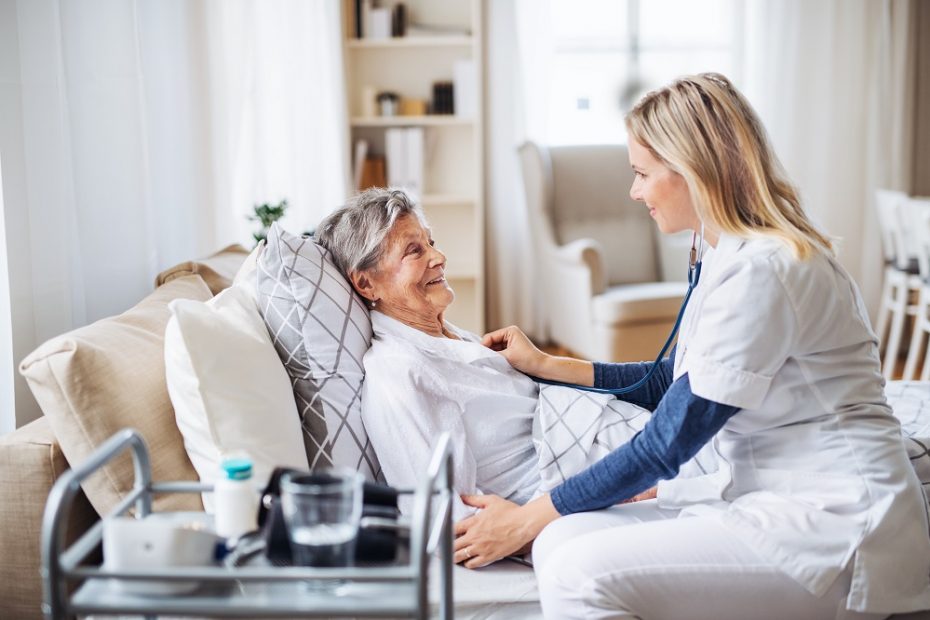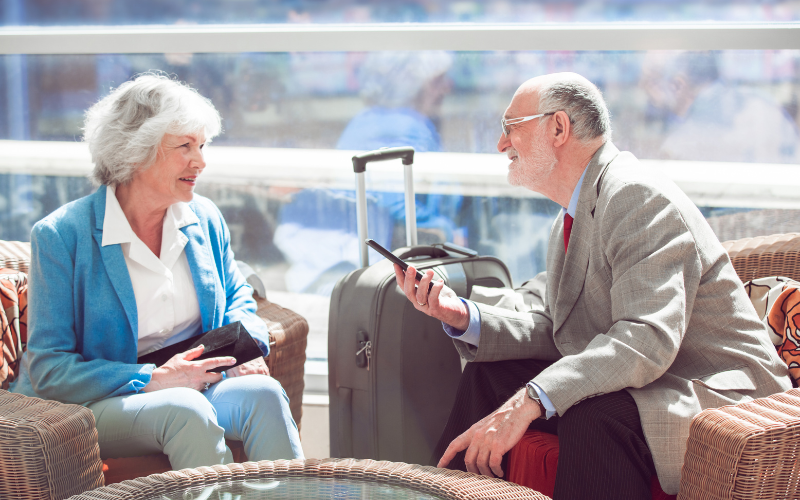
The bedroom is associated with comfort and rest. Seniors will spend significant time in the bedroom, so ensuring the space meets their unique needs is essential. Making modifications to the bedroom, such as the ones that follow, will be necessary to preserve seniors’ safety and comfort.
The bedroom is an important part of the home. Seniors sleep in the bedroom. Preparing for the start of each day, and getting ready for the day’s end, are also done in the bedroom. Older adults must navigate the bedroom in the middle of the night to use the bathroom.
Older adults who suffer from an illness may find themselves spending significant time resting in the bedroom. Injuries can also lead to spending lengthy periods in bed in order to facilitate recovery. Bedridden seniors rest and have meals in the bedroom, too.
Plus, the majority of aging people prefer to age in place. Consequently, the home must be modified to enable seniors to live with as much independence as possible. The bedroom is no exception. A senior friendly bedroom ensures older adults are safe, happy, and comfortable.
1. Choose a Ground Floor
The first step in turning a bedroom into a senior friendly one is to choose a room located on the ground floor. Stairs in multi-story homes are an obstacle to elderly individuals who ambulate using a cane, walker, motorized scooter, or wheelchair. A bedroom on the main floor is ideal.
When a first-floor room is not possible, families may build a stair lift to facilitate mobility. Seniors with back, knee, or balance issues can access an upper-story bedroom with increased ease. Various stair lift options are available, including those featuring a standing platform or perch-style seat.
2. Upgrade to an Adjustable Bed
The aging process makes it difficult for seniors to bend or move downwards. A tall bed with a height of 25 to 36 inches is thus recommended. A bed with significant height prevents older people from having to bend in order to get into and out of bed.
An adjustable bed may be appropriate, especially when the senior feels more comfortable with a raised head or foot. Families may invest in bed railings for peace of mind. Safety rails prevent the senior from rolling out of bed; an assist rail offers the senior stability when exiting the bed.
3. Install Slip-Resistant Flooring
Carpeting, with its softness and traction, seems like the ideal flooring solution for a senior’s bedroom. However, consider carpets carefully, since ambulation is more difficult for seniors who use walkers or canes. Plus, carpet fibers trap allergens, triggering allergies in seniors with respiratory issues.
Hardwood and laminate floors can be slippery. Reduce the likelihood of falls by adding safety strips to increase traction. Regular maintenance may be required, since hardwood floors are easily damaged by moisture. If choosing to add rugs to the floor, prevent trips on the rug by taping down the edges.
4. Add Ample Lighting
Adequate bedroom lighting is critical for safety at night. Touch-activated bedside lamps, for instance, prevent seniors from fumbling with light switches in the dark. Good lighting also gives seniors with impaired eyesight the ability to find items with greater ease.
Under-the-bed lighting is triggered by motion sensors when the senior steps out of bed and provides immediate illumination. Automated lighting systems are also useful to older people. When possible, choose a bedroom built with several windows to incorporate more natural light.
5. Minimize Furniture
A minimalist approach to a senior’s bedroom is key to preventing clutter and the associated risks of falls. In addition to the bed, a bedside table, reading chair, and a chest of drawers suffice in a senior’s bedroom. Also limit decorative elements in efforts to prevent clutter.
The choice of furniture should not obstruct the senior’s walking path. The elderly individual should have a clear path to walk without bumping into furniture or décor. At the same time, the ideal bedroom will have enough furniture so that the senior can hold onto them for balance.
6. Use Smart Technology
Use smart technology whenever possible. Automated window coverings may be controlled by a remote from the senior’s bed. Such conveniences ease the daily life of a senior who is bedridden or suffers from mobility issues. Add a white-noise generator that plays the sound of falling rain for soothing comfort.
For safety reasons, the senior should have easy access to a phone in the bedroom. Ideally, a functional phone featuring a large, backlit keypad will be located next to the bed. Keep a list of emergency phone numbers in the drawer of the bedside table.
Given the numerous technology devices available today, the typical senior’s bedroom may be littered with cords and cables. Keep cords away from walking paths or tape them to the floor to prevent tripping hazards. Replace any frayed or damaged cords immediately.

Creating a senior-friendly bedroom is helpful to a large degree. However, seniors still need the support of compassionate individuals, caregivers who are available to provide assistance from morning until night. Families can find qualified elder care at Assisting Hands Home Care.
We are a reputable home care agency staffed with a team of skilled caregivers. Our professionals are available for 24-hour home care and live-in care, among a range of additional care options. Live-in caregivers provide invaluable support as soon as the senior wakes until she goes to sleep at night.
Continuous monitoring is provided by our 24-hour caregivers. Our teams of caregiving professionals alternate shifts to ensure the senior is supported at all times of the day and night. Such care is suitable for seniors living with chronic conditions or who require 24/7 home care.
Licensed and trained, Assisting Hands Home Care caregivers are invaluable to seniors and their families. When 24-hour or live-in care is right for your elderly loved one, schedule a consultation with us. We are privileged to provide quality senior care to individuals living in communities near Crete, Frankfort, Matteson, and Mokena, Illinois.
















